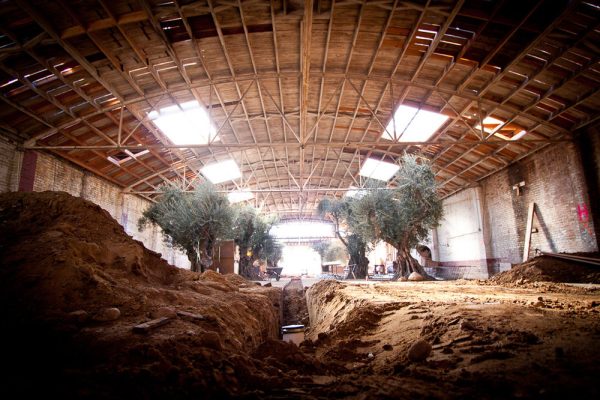
Design-Build is a construction delivery method that provides owners with a single point of contact for both the design and construction phases of a project. One entity holds single-source responsibility and contractual risk for every aspect of a build — from pre-construction to architecture, construction and post-construction. This entity manages all contracts with companies, such as subcontractors, equipment vendors and materials providers. One entity, one contract, one unified flow of work from initial concept through completion.
Streamlining project delivery through a single contract between the owner and the design-build team transforms the relationship between designers and builders into an alliance, which fosters collaboration and teamwork. United from the outset of every project, an integrated team readily works to successfully complete a project faster, more cost effectively and with fewer change orders.
Design-Build Process
Selecting a Design-Builder. To limit the potential risks associated with having one entity design and construct a facility, the owner may have a competitive bidding process for Design-Builders. Our recommendation is to avoid using a hard-dollar, low-bid selection process. Design-Builders deliver the best value by evaluating budget solutions early in the design process and by creating continuous price estimates as the design progresses. Limiting prospective builders to hard-dollar bids before they have a chance to get into the project can lead to misleading and uncertain estimates, which can mean a project that doesn’t deliver what is needed.
Pre-Construction. The pre-construction phase of a project is crucial, setting the course for a successful job. It includes business and financial assessments, in which the Design-Builder’s pre-construction staff learns about the owner’s business, industry, goals, vision and financial realities. Concurrently, architects and engineers begin architectural, mechanical and electrical system assessments and review any existing floor plans, fire and smoke preparations, interior room finishes and structural systems.
With all the key information in mind, the project team partners with the owner to identify the right facility, design and construction program to help achieve the goals within budget and time constraints. The scope of the project is set, and creative solutions can take shape to help realize the vision.
Architectural Design. At this stage, the project team has a solid understanding of the business and financial needs, project schedule, cost, job site, and the facility’s architectural and mechanical requirements. Next, the construction team and project managers partner with the architectural team to value engineer cost savings into the design. The architectural design begins in earnest and represents the best opportunity to capture value in the project.
Construction. The Design-Builder will start preparing the job site while design progresses, and elements of construction can begin during the design phase. By overlapping construction and design, the project team can deliver a timely build that makes aggressive schedules possible. The construction team, specialty subcontractors, materials vendors will maintain all the same quality standards as they would in other methods. But the job will get done more quickly, to a clearly defined scope with total accountability.
Post-Construction. Once the new or renovated facility is complete, the Design-Builder should provide a post-construction handoff. That includes walk-throughs, hands-on training and core documentation for owners and facility management teams.
Benefits Of Design-Build
Design-Build offers many unique benefits and advantages that other construction methods simply don’t deliver. Some of the biggest benefits of Design-Build are rapid delivery, a smooth process, better solutions and better communication.
Rapid Delivery. Design-Build offers rapid delivery because design and construction happen concurrently and because there’s only one selection phase instead of two. The delivery method turns otherwise impossible timeframes into reality.
Smooth Process. The single-source responsibility afforded by Design-Build means there’s no conflicting recommendations from contractor and architect. Instead, one entity has total accountability for any and all construction and design elements.
Better Solutions. In Design-Build as ideas come to the table, teams work as a unit to analyze them, in full transparency, so owners are assured of getting the best materials, schedule, design and more. This innovative process makes it possible for owners to see more options, make better-informed decisions and realize a better value.
Better Communication. Delivering a successful Design-Build project requires open collaboration between all team members. Creating a team-oriented approach promotes high levels of communication and transparency, both imperative to the success of any project. It allows owners to share their vision with the team, and align the interests of the stakeholders. The team-oriented approach also provides the collaborative effort necessary to evaluate the project’s objectives, assess schedules and analyze opportunities as the project progresses. As a team, no other group is better qualified to align the owner’s vision with the project’s goals and objectives. As a result, Design-Build is well suited for the most complex jobs, simplifying them so owners realize better quality and require fewer claims.
At Creative Builds, Design-Build is what we do. We partner with select architects, engineers and construction professionals from throughout San Diego to create Design-Build teams that perfectly match the unique demands of any given project.
